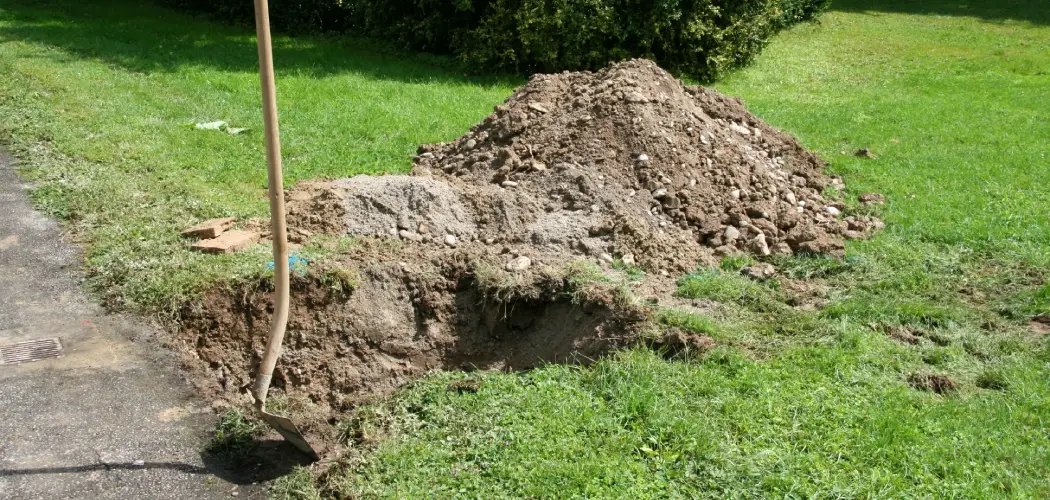Filling holes in the yard can improve the overall aesthetic appeal of your outdoor space and make it safer for children and pets. Additionally, filling any unsightly or dangerous holes in the yard can increase its curb appeal and property value if you’re looking to resell your home.

One of the main advantages of filling holes in the yard is that it can improve the appearance and safety of your outdoor space. It can also reduce trip hazards and help prevent drainage problems and other issues from developing. Filling holes with soil, sand, or gravel can also stabilize the ground and make it level, which is beneficial for various activities. In this blog post, You will learn in detail how to fill holes in the yard.
Materials You Will Need
- Shovel
- Garden rake
- Tamper or another compaction tool
- Topsoil, peat moss, or compost as needed
- Gravel, sand, or stones (depending on soil type)
- Compost and manure, if desired
- Grass seed if you’re filling in a lawn area
- Grass fertilizer
- Landscape fabric, burlap, or other layers to help prevent grass seeds from washing away
- Leveling tool (such as a 2×4)
- Plastic sheeting or tarp (optional)
- Watering can
Now that you have all the needed materials, it’s time to start. Begin by using the shovel to remove any dirt or debris from the hole in the yard. If the grass is covered, you can use a garden rake to lift it away from the edges gently.
Step-by-Step Processes for How to Fill Holes in the Yard
Step 1: Inspect the Hole
Take a close look at the size and depth of the hole. Determine if you need to dig out more dirt or if you can just fill it in with new material. If the hole is too deep, use a shovel to remove some excess earth from the bottom until it is level with the surrounding area.
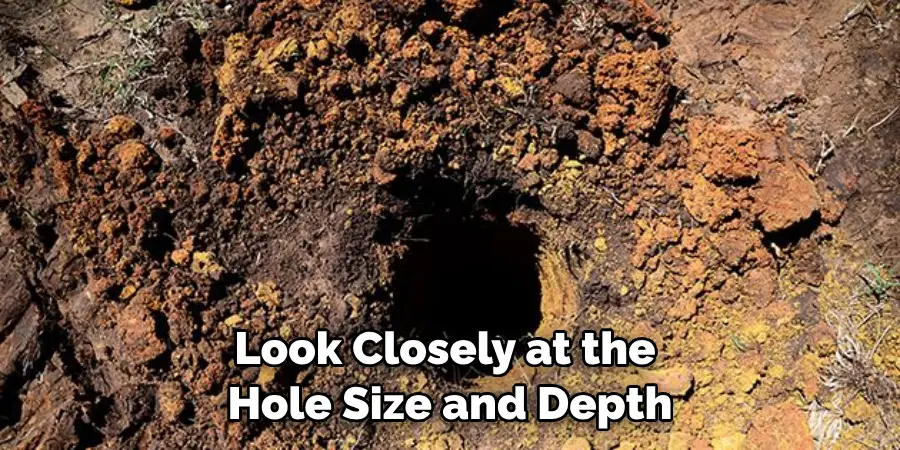
Step 2: Compact the Ground
While wearing protective gloves, use a tamper to compact the remaining ground in the hole. This will help create a solid base for filling in. Spread gravel or small rocks over the area at least two inches deep. This layer will further help provide stability for the material to be added later.
Step 3: Add Larger Rocks
You can add larger rocks or stones over the gravel layer as an optional step. This will help create a solid foundation supporting the fill material above it. Use a combination of soil and compost to fill in the remaining area. This mixture should be applied evenly over the hole and then tamped down firmly with a tamper or a shovel.
Step 4: Add Fertilizer
Sprinkle fertilizer over the newly filled-in hole. This will help promote healthy grass growth once it is planted. Spread grass seeds over the newly filled area of your yard. To ensure the grass seed remains in place, lightly cover it with a thin layer of soil and compost mixture.
Step 5: Water the Area
Use a garden hose or watering can to moisten the newly filled area. This step is essential for promoting healthy grass growth. Continue to water the area regularly, and soon you’ll have a lush, green lawn.
Following these steps will help you successfully fill in any holes in the yard. With just a little effort, you can eliminate those unsightly gaps in your lawn and create an inviting outdoor space for you and your family to enjoy.
Safety Tips for How to Fill Holes in the Yard
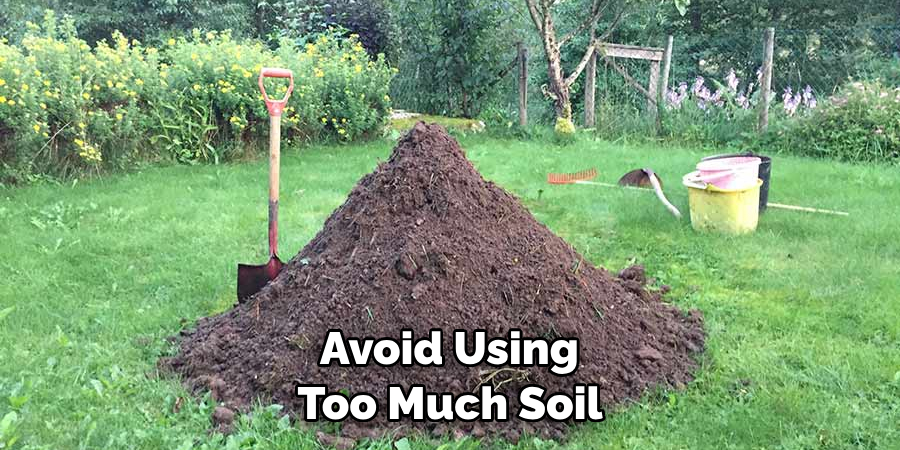
- Wear protective eyewear and gloves when filling holes to avoid potential harm to your eyes and skin.
- Make sure the hole is completely dry before beginning the process of filling it with soil. If necessary, wait a few days to ensure the area is dry enough to work on.
- Choose soil or mulch that is suitable for the type of yard you have. If in doubt, consult a professional lawn care expert.
- Avoid using too much soil when filling in the hole, as this can lead to an accumulation of water that may cause damage to your lawn or plants over time.
- When possible, use a trowel or other tool to flatten out the surface of the newly filled soil. This will help to prevent water from pooling in the area.
- Compact the soil or mulch properly so it does not erode over time.
- Once the hole is filled, add a layer of grass seed and fertilizer to ensure that new growth can take place. Follow all instructions for proper care and watering of the area to ensure the grass grows back healthy and thick.
Finally, look for any new holes that may develop over time and repeat this process as needed. Following these safety tips will help ensure your yard looks great while protecting you from potential harm. Filling in a hole can be a quick job, but with proper precautions, it can be a safe and successful process.
What is the Best Way to Prepare the Area Before Filling the Holes?
Before filling holes in your yard, it is important to prepare the area. Rake the dirt around the hole to break up clumps and remove large rocks or roots that may obstruct the hole. If you’re working with a large hole, use a shovel to break up the dirt around the edges and smooth the sides of the hole.
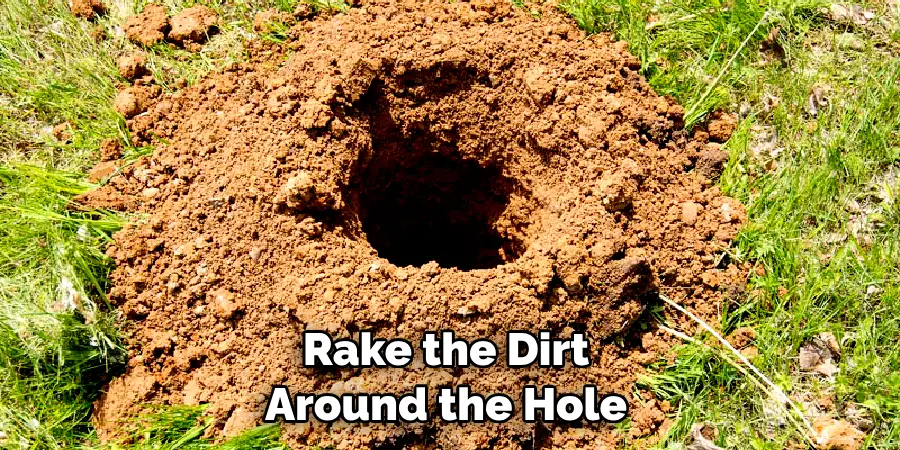
Make sure that all debris is removed from the area before you begin filling it. Also, dig out any remaining dirt to prepare a stable base for your fill. Once you have cleared any obstructions, you can start filling the hole.
When adding the fill material, pour a layer of sand or gravel into the bottom of the hole. This will help create a base for your soil and can help with drainage. You’ll then want to add soil on top of this layer, filling the hole until it is level with the ground around it. Once you have finished adding the soil, use a rake to level and smooth the surface. This will ensure that the fill is even and will look natural when finished.
What is the Best Way to Level a Filled Hole in the Yard?
The best way to level a filled hole in the yard is to compact the fill material. This can be done with a hand tamper (a tool with a flat metal plate at one end) or by driving over the area with a vehicle such as an ATV. By compressing the fill, you’ll create a firm and even surface that won’t settle or erode over time. You can also use a rake to help smooth out the filled area and ensure the surface is even.
Finally, topsoil may be added to provide an aesthetically pleasing finish. It’s important to note that holes in yards may require additional treatments, such as drainage systems or soil treatments, before filling. Additionally, some holes may be too large or deep to fill safely and should be professionally assessed before attempting any fixes.
Are Any Potential Drainage Issues Need to Be Considered Before Filling a Hole in the Yard?
When filling a hole in the yard, it is important to consider any potential drainage issues. Without proper attention to drainage, water can accumulate and pool around the filled area, leading to soft spots and wet areas in the lawn or garden.
If the soil is already overly moist or prone to flooding, it may be necessary to construct a small retaining wall or berm to ensure proper drainage and prevent water pooling.
Additionally, consider if the hole is being used as a makeshift drainage route for other areas of your property by digging a shallow trench along the hole’s edge to direct water away from the filled area.
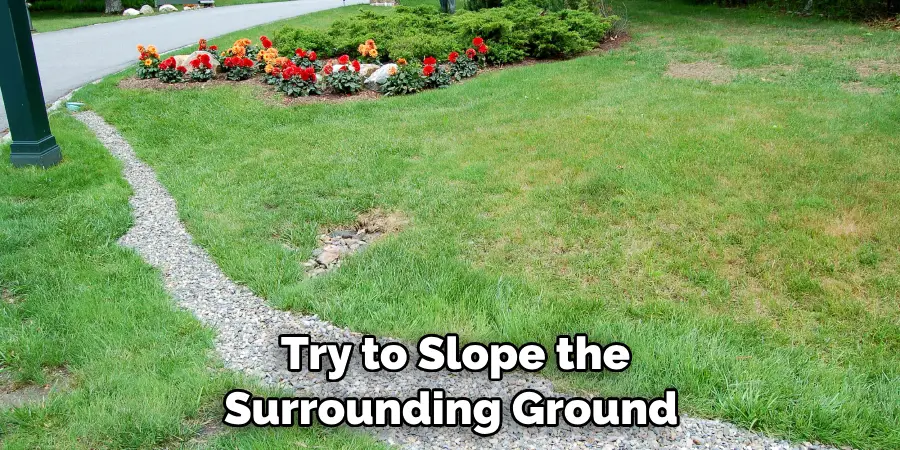
Try to slope the surrounding ground so that it directs water away from the spot where the hole is. Mulch can also be a great way to retain moisture and prevent soil erosion, providing an attractive way to finish the filled hole. Spread a layer of mulch over the filled area after it has been leveled and shaped, ensuring enough material over the entire patch.
What Potential Problems Could You Encounter When Filling Holes in the Yard?
When filling holes in the yard, there are some common problems that you should be aware of. It’s important to properly prepare for the job to avoid these issues and ensure a successful project. One common problem is soil erosion. Large amounts of soil can become displaced or washed away during the hole-filling process.
If left unchecked, this can result in an unstable foundation and cause the hole to collapse and form again. To prevent this, the soil should be carefully tamped down before being filled up with a mixture of topsoil and compost.
Uneven terrain is another issue you may need help with when filling holes in the yard.
The land can become bumpy and have low or high spots if not leveled correctly. This can make it difficult to mow the lawn without risk of damaging the machinery or causing uneven grass growth and other plants in that area. To remediate this, you should use a rake to level out the soil before filling the hole.
Conclusion
In conclusion, filling holes in the yard is an easy and affordable task that can be done with some simple tools and materials. You can easily fill a hole in your yard by removing debris, preparing the soil, adding sand, tamping down the surface, and finally, adding topsoil. This process doesn’t require special skills or knowledge, but taking safety precautions while engaging in this activity is
About
Outdoor Fixes is a distinguished figure in the world of Diy design, with a decade of expertise creating innovative and sustainable Diy solutions.
His professional focus lies in merging traditional craftsmanship with modern manufacturing techniques,
fostering designs that are both practical and environmentally conscious. As the author of diy,
outdoorfixes delves into the art and science of outdoorfixes-making, inspiring artisans and industry professionals alike.
Education RMIT University
(Melbourne, Australia) Associate Degree in Design (Outdoor Fixes) Focus on sustainable design, industry-driven projects,
and practical craftsmanship. Gained hands-on experience with traditional and digital manufacturing tools, such as CAD and CNC software.
Nottingham Trent University
(United Kingdom) Bachelor’s in outdoorfixes.com and Product Design (Honors) Specialized in product design with a focus on blending creativity with production
techniques. Participated in industry projects, working with companies like John Lewis and Vitsoe to gain real-world insights.
Publications and Impact
In diy, Outdoor Fixes his insights on indoor design processes, materials, and strategies for efficient production.
His writing bridges the gap between artisan knowledge and modern industry needs, making it a must-read for both budding designers and seasoned professionals.

